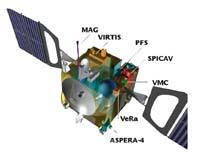Venus Express: from Europe to Venus
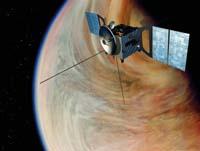
Venus is back in everyone's mouth. In the years 60-70 he gave much to talk, it was the objective of several missions and - remember the Soviet ship Venera and the American Mariner, for example -. But recently space agencies have forgotten something similar.
Now, however, the European Space Agency has been interested and has sent the Venus Express probe to make Venus known.
Why have you sent a probe to Venus? For it is easier to answer this question than on the contrary, that is, it is not easy to explain why the probes have been sent to farther planets and not to Venus. In any case, the main reason for sending Venus Express is not that Venus is close to Earth, but that it has much to teach -- experts believe that what is learned there will be applicable to Earth.
Venus is said to be the sister of Earth, as they are similar in some of its characteristics: they are terrestrial planets and are believed to have a composition similar to that of the solid side, they have a similar size... In addition, when the two planets were formed, even more
they say they had more. Therefore, knowing Venus better allows us to know the creation of these planets.

However, the differences between the two surprise the experts and not the similarities. Venus has several mysteries. And, of course, it is a beautiful challenge to solve these mysteries. Apparently, although they were similar in origin, they had very different evolutionary pathways. An example of this is the atmosphere.
Mission objective: Atmosphere of Venus
On the surface of Venus the temperature is very high (about 465°C on average), while on Earth the temperature is about 15°C. Venus is closer to the Sun, yes, but it is not the reason for the difference (the surface of Venus reaches less solar energy than the Earth's surface). The key is the greenhouse effect.
The greenhouse effect is violent on Venus. Its atmosphere is very compact--the surface pressure of Venus is 90 times higher than that of the Earth - and its main component is carbon dioxide. This is an extreme situation and so far this greenhouse effect has not been properly studied, since the mathematical models applied to Earth do not serve.
It is therefore a question of studying the greenhouse effect on Venus, in the hope that it will contribute to combat the Earth's.

Another issue that is requested is superrotation. Venus, at a height of 50-65 kilometers, has clouds formed by drops of sulfuric acid. The wind speed is huge at this height (about 300 kilometers per hour), which makes the clouds move very fast. Thus, the phenomenon called superrotation occurs: Venus's atmosphere rotates much faster than the planet itself. Clouds only need four days to turn the planet, while the rotation of the planet is very slow: It takes 243 days to turn around its axis and then it has turned around the Sun. Therefore, in Venus it is said that the year is shorter than the day.
To explain these and other phenomena, Venus Express will analyze the atmosphere of Venus: composition of the atmosphere, vertical structure (i.e. characteristics of the atmosphere depending on the height), dynamics of clouds, meteorology, etc.
It will also analyze the surface of Venus. The oldest craters are only five hundred million years old. According to experts, this means that the surface of Venus is renewed from time to time. On Earth energy is constantly released from the interior of the planet, which are volcanoes, which are earthquakes... Instead, on Venus they believe that this energy accumulates within the planet. One day there is a eruption that covers the entire planet and the surface is renewed, disappearing the pre-existing craters.
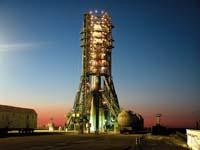
It seems that the surface of Venus is closely related to the atmosphere. And Venus Express will collect data to clarify this relationship.
Reuse and save
This mission was born in March 2001. The European Space Agency (ESA) requested proposals for the reuse of the Mars Express probe design. They wanted to use the same design and the same industrial equipment. However, the time was very hard: they had to prepare as soon as possible the new mission, since they had to be launched in 2005.
Think and do it. The Venus Express probe was launched on 8 November 2005 from the Baiconur cosmodrome in Kazakhstan. For the launch they used a Soyuz-Fregat, which is currently heading to Venus.
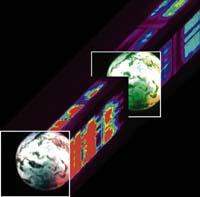
Also in Euskal Herria looking at Venus
The VIRTIS camera is the most complex tool in the probe. The data collected by this tool will be analyzed by experts from the University of the Basque Country, headed by physicist and astronomer Agustín Sanchez-Lavega.
They have studied the atmospheres of the great planets of the Solar System, Jupiter, Uranus, Saturn and Neptune, and this time they will have the opportunity to participate in the investigation of the atmosphere of Venus.
Jesús Arregi is part of this team and believes that the VIRTIS camera will bring you a lot of information. "With this data we will mainly try to analyze the structure of the atmosphere (which layers it contains), the clouds and their movement, the waves, the existence of wave movements, etc. ".
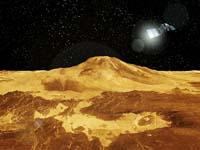
The probe enters the orbit of Venus in March. On the way the tools will be tested and for the moment the tests go well. The implementation of the tools by Venus Express will occur immediately after the consolidation of the orbit and, according to Jesús Arregi, "we will begin to collect the data for the month of May, and from there it will be a work of analysis".
The probe team is ready to work 486 days. However, if it works well, they will continue to work and groups of European physicists and astronomers will continue to collect data to help complete the image of Venus. We expect the results.

